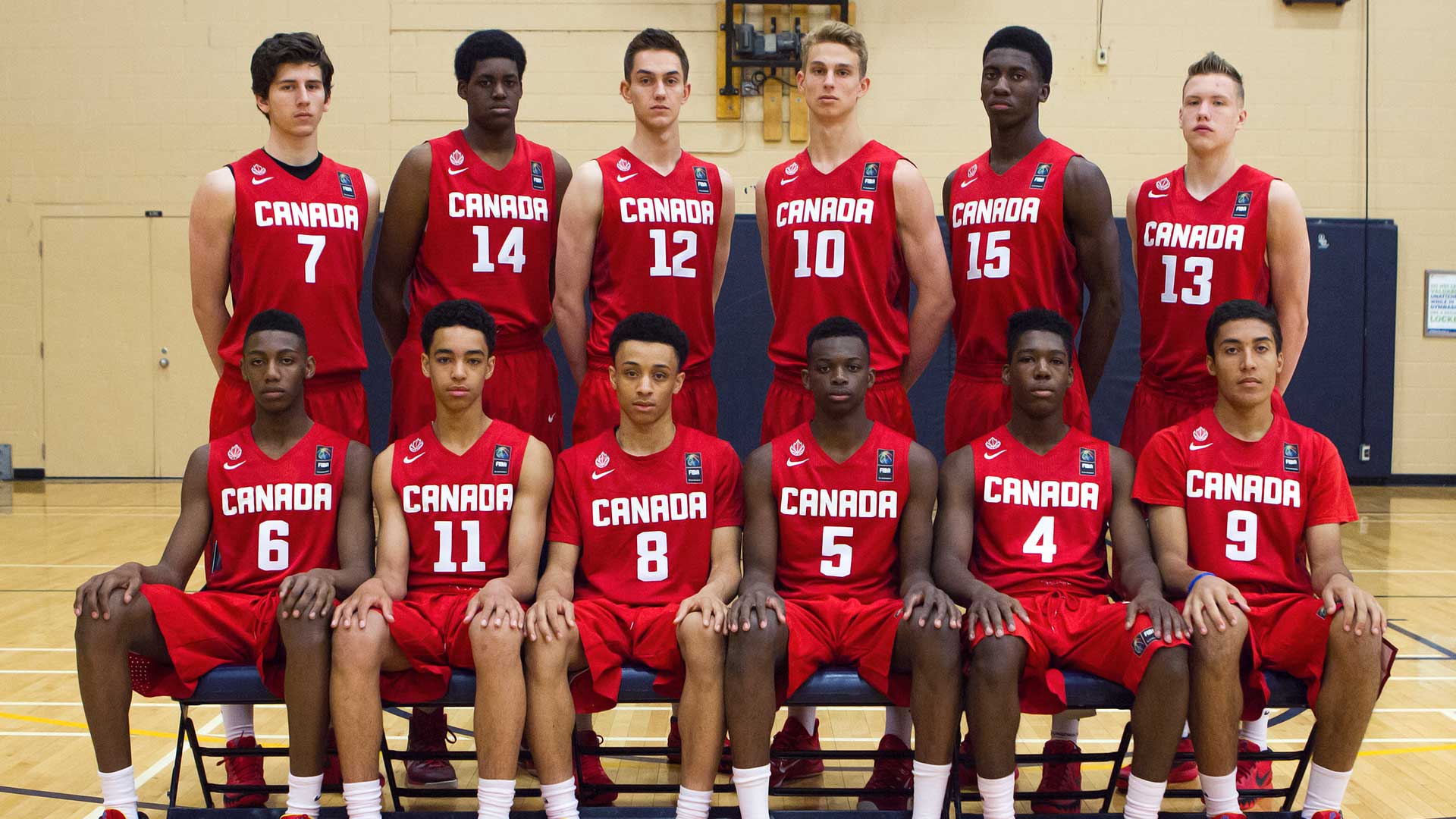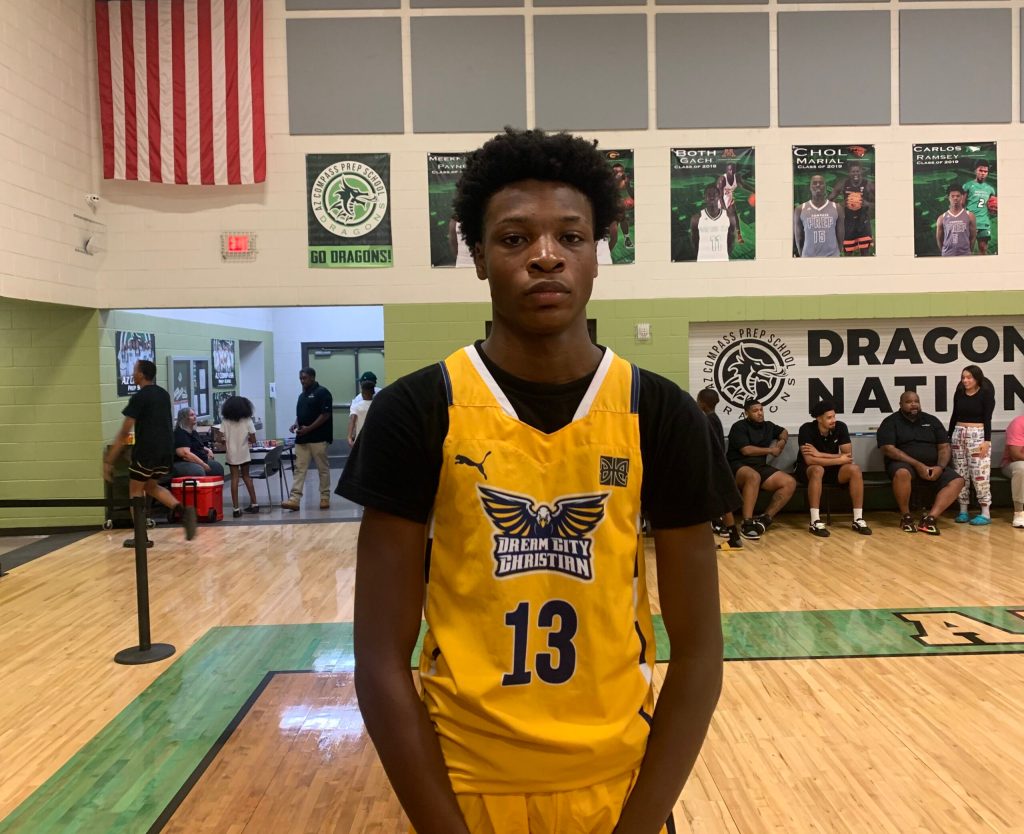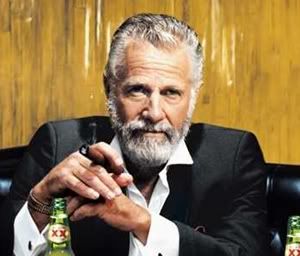CHAMPIONSHIP LOCATION, DRAWS, AND SCHEDULE
For the second time in a row, the championship be hosted by Mexico, this time in Yucatan, between June 5 and June 11. As usual, the four top teams will qualify for the FIBA U17 World Cup next summer.
Without knowing too much about the other teams and who they bring this year, it seems that Canada got the easier initial group this time, with the DR, Uruguay, and Brazil. The other group includes the US, hosts Mexico, the always well-coached Argentina, and Puerto Rico, who also project to be a good team this year. So it’s important for Canada to perform well in the group stage to avoid one of the stronger options in the QF, which is the key game for guaranteeing a spot in the U17 WC next year.
Canada will play three back-to-back games in the preliminary group stage: The DR (June 5), Uruguay (June 6), and Brazil (June 7). Then there’s a one-day break before the quarterfinals (#1 against #4 from the other group; #2 against #3), the semis, and the final on June 9th, 10th and 11th respectively. Altogether, 6 games in 7 days. All games are streamed on the championship website:
http://www.fiba.basketball/u16americas/2023
A BIT OF HISTORY
This will be the 8th tournament in the bi-annual edition of the U16 FIBA Americas. Canada has won silver or bronze in all 7 previous tournaments but never won the gold. In the first three championships we saw some strong individual performances (Pangos in 2009; Murray in 2013), but were unable to translate it into team success, losing to Argentina and to Puerto Rico in the group stages, which led to inevitable meetings with the US in the semis.
The 2015 cadet team for the FIBA Americas championship was one of the most talented youth teams in Canadian history. It included RJ Barret, Simi Shittu, Iggy Brazdeikis, and Andrew Nembhard, as well as Marcus Carr, Noah Kirkwood, and Jaelin Llewellyn. That team easily won its five first games by an average margin of about 40 points. Then, in the gold-medal game, it stunned the US team (Wendell Carter Jr., Kevin Knox, Tre Jones, Gary Trent, Markus Howard) by jumping to an early 19:3 lead at the end of the first quarter and continuing to lead up to the end of the third quarter. Eventually, the US size and mainly its depth were too much in the fourth and the Americans finished with the gold.

After putting up an unremarkable team in 2017 (which nevertheless still managed to win the silver), in 2019, we again had a strong team, led by Ryan Nembhard, Caleb Houstan, Shaedon Sharpe, and Enoch Boakye, with Leonard Miller also on the team, though in a minor role. Houstan (23ppg) and Nembhard (14ppg and 9apg) played especially well and Sharpe showed gave glimpses into his talent. It was enough to win all the games up to the final by a comfortable margin. The final was also competitive, but like in 2015, the Americans, led by future leaguers like Jalen Duren, Jabari Smith, Amari Bailey, and AJ Griffin, were bigger, more athletic, and deeper. So although it was not a blowout and we managed to keep it fairly close with strong games from Houstan and Nembhard, the eventual winner of the gold medal was never really in doubt. Still, that team will eventually generate 3 to 4 NBA players, which is all you can ask from a Canadian cadet team (especially since you can’t always identify the best talents this early on).

Finally, in 2021, in the midst of the of a global pandemic, we sent a nice enough team, led by Mikkel Tyne, Efeosa Oliogu, Ishan Sharma, Jacob Theodosiou, and Olivier Rioux. Unfortunately, I thought that team was a bit hampered by some questionable coaching decisions, which led to it losing a key game in the group stage to Argentina, setting up a matchup with the US in the semis. That semis game was surprisingly competitive, with Olivier Rioux giving a bit of a hard time to the American bigs and the young Oliogu showing his talent. The game was actually tied at half time and Canada had the lead with 4 minutes to go in the third. But then the US shifted gears and easily ran away with it. Canada won all of its other games in the tournament (including the bronze medal game vs. the DR) by comfortable margins.
WHAT ARE WE GETTING IN 2023?
It’s always hard to be sure at such an early stage, as players are so young and haven’t been tested. Nevertheless, from what I’ve seen so far, I’m not very excited about this team.
How come?
First, from what I’ve seen, this team will be missing quite a few of the top talents born in 2007. Players like Rokiem Green, DJ Smith, and the younger Kymani Walters and Miles Sadler from Ontario, Dionycius Bakare, Rohan Dhanoa, and Logan Stewart from BC, Promis N’landu from Quebec, and Kian Tyson from Saskatchewan. Some of these guys were invited to the initial Team Canada assessment camp but did not make it any further. Perhaps they did not impress the coaches, but I’m not so sure that’s always been the case and there might other reasons that I’m not privy to. In any case, I think guys like Green, Walters, and Bakare may be more talented than some of the players who are in Mexico now.
Regardless of who’s missing, I’m just not sure the class of players born in 2007 is very strong (I’m significantly higher on the cohorts of 2006 and 2008). There’s no clear star power here. To my eyes, no one has looked like an early riser; someone who already plays like a top-50 North America player and could arguably be playing for the US team, the way TT, Wiggins, Pangos, Murray, Barrett, Houstan, the Nembhard brothers, Shittu, and others looked like when they were playing for the U16 team. And no one has looked like a unique athletic (Sharpe, Oliogu), mental (Murray, Barrett), or physical aberration with a projected high ceiling.
Again, it’s early and much can change, but from what I’ve seen so far, I’d be surprised if there are any talents here in the caliber of our top players from the 2015 and 2019 teams.
THE CANADIAN ROSTER
As I said above, I know more about a few players who didn’t end up making the team (such as Rokiem Green, DJ Smith, Kymani Walters, Dionycius Bakare, Logan Stewart, and Promis N’landu) than I do about some of the guys on this roster. As such, I’m really not sure who’s going to get extended minutes or how the starting 5 is going to look like.
So I’ll just write briefly about some of the prospects I was able to watch during last year’s Canadian Nationals, the 2023 Biosteel futures game, and a few other occasions. I look forward to being pleasantly surprised by them and by some of the others I haven’t had a chance to watch much.
Guards
Jordan Charles (5’10 PG; Scarborough, ON). A very crafty PG, who’s a good passer and can also score well with good perimeter shooting and a nice array of moves. That said, I’m doubtful about the long-term potential barring major physical development. He’s rather small and thin and not a very explosive athlete. Also tends to be a bit trigger happy. Will be tested by the size of opposing guards and bigs.
Kamai Samuels (6’2 PG; QC). A very quick PG with good physicals and athleticism. Great change of pace and a nice mid-range pull-up game. Also finishes well at the rim. Plays strong defense, with toughness and a knack for stripping the ball. Not a very good perimeter shooter from what I’ve seen, which will be a key element going forward.
Elijah Patterson (6’2 SG; Mississauga, ON). The brother of Addison, who was excelled for several young Canadian teams a few years ago. Not as tall as his brother but hopefully he’s not yet done growing, as he’s one of the younger players on this team (only 15.5yo). A natural scorer, who can score from all 3 levels, but is particularly adept in the paint. A good athlete with alpha mentality and nice ball skills. Not afraid of the moment and might end up as Canada’s leading scorer in this competition. On the flip side, he sometimes plays a bit selfishly and doesn’t always make the right read and the extra pass.

Quinten Ethier (6’4 SG; St. Catharines, ON). An excellent perimeter shooter, mainly off the C&S. Can also create a bit off the dribble. A volume shooter who can be quite streaky but will likely be this team’s best shooter and, if he gets hot, possibly also their best scorer. Not an outstanding athlete, but plays an efficient game, doing the little things that can make a difference.
Traymaine Belanger (6’4 SG; Surrey, BC). Haven’t had any chances to see him play, so I’m looking forward to seeing what he brings.
Wings
Isaiah Headley-Smith (6’3 SF; Pickering, ON). Not very big for the position but one of the better athletes on this team. Can get to the rim and finish with authority and some craftiness. Haven’t seen enough footage to say much more.
Patrick Anamali (6’5 combo forward; Calgary, AB). A lengthy and very mobile combo forward, who looked like one of the more interesting long term prospects in last year’s Nationals, playing for Team Alberta. Also looked a bit bigger to me than his listed 6’5. An excellent shot blocker who shows good presence in the paint on both ends of the floor. Still raw offensively, with a clunky handle and a questionable perimeter shot, but should be able to make the transition to full time SF if he improves these areas.
Maxandre Calixte (6’6 SF; Boucherville, QC). Another guy I haven’t seen play at all (wasn’t part of Team QC last year), so let’s wait and see.
Bigs
Nnamdi Ogali (6’8 C; Calgary, AB). One of the more physically mature players on this young team, Nnamdi is a strong center who’s also a fairly good athlete and might be this team’s starting center considering that he’s at least a year older than the three other bigs. That said, watching him with Team Alberta last year I thought he was somewhat limited. Not too mobile, just okay skill, and a bit of a mediocre touch around the rim. Hopefully, he’s made some improvements since then.
Maxime Meyer (6’8 C; Toronto, ON). I have to say that I’m a bit surprised (pleasantly so!) they decided to go with three 2008-born bigs (Meyer, Osaruyi, and Okokoh) at the expense of guy who might have a lower ceiling but could be more ready and a safer bet for now (e.g. the 2007-born Ehikhueme Ehikhametalor). Then again, I haven’t seen the training camp and maybe this is completely based on current ability rather than future projections. In any case, Meyer is another guy I haven’t had a chance to watch much and am waiting to see what he can do.
Paul Osaruyi (6’9 C; Ottawa, ON). A young (only 15), lengthy, talented and athletic big with some nice moves in the paint. Still raw but to my eyes he’s one of the players with the better long term potential on this team and I’m glad they decided to take a gamble on him.

Godson Okokoh (6’7 PF; Ottawa, ON). The youngest guy on this team, Okokoh is not yet 15yo. A big with size, length, and some athleticism, who moves well, but is still very raw. Skill is rather rudimentary and finishing touch around the rim also developing. I doubt he’ll have a major roll on this team but like with Osaruyi and Meyer, I’m glad they decided to take him as he has a better ceiling than most of the 2007-born bigs.
BOTTOM LINE: ANY CHANCES FOR GOLD?
Let’s cut to the chase: NONE.
Sure, I know, never say never. But the US team this time around is really on another level. Only speaking about the guys I’ve had a chance to watch, Cameron Boozer (Carlos’ son) is probably the best high school prospect in the world; an incredibly skilled yet physically mature power forward (6’9), who can do it all on both ends of the floor. A fantastic scorer, who shoots the ball exceedingly well, while also dominating in the paint. His twin brother Cayden Boozer is an excellent PG, who really controls the pace of the game. Other guys who are really talented are PF Koa Peat (6’8), SF AJ Dybansta (6’7), and SF Tyran Stokes (6’7). A lot of size and athleticism.
Altogether, this is a very strong American age group, who is also sending most of its best players to Mexico. I feel like this team might just stamp over the other teams and finish its games in the first quarter, showing even more dominance than your typical US team in these competitions.
I also hear Puerto Rico is bringing in a strong team and Argentina is always a challenge, though I really know very little about them.
In sum, the most important goal in this championship is to win on the fifth day of the competition (the QFs) and get to the semis, securing a spot in the U17 WC next year in Turkey. I hope this team is strong enough to do it. The key might be winning all three games in the group stage, in order to avoid Argentina or the PR in the QF. Doing that will also have the added value of likely avoiding the US in the semis and having a realistic shot at getting to the gold-medal game.
BEST OF LUCK TO THE BOYS!

















